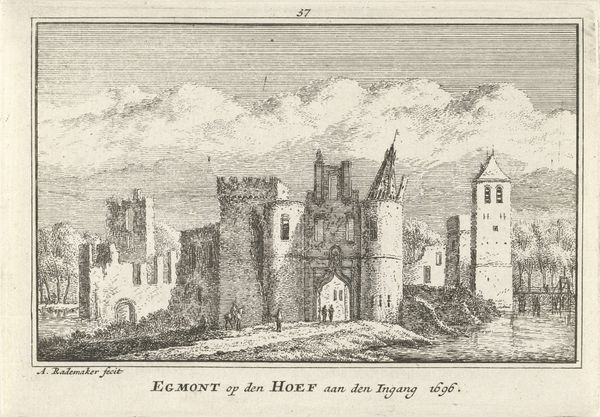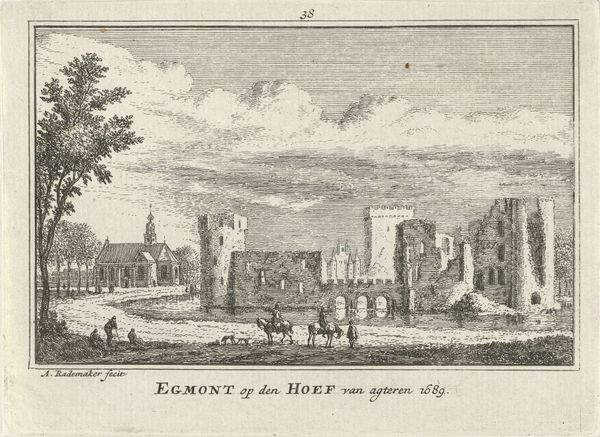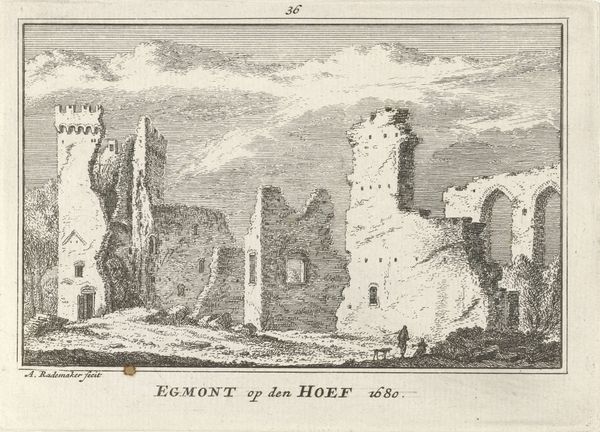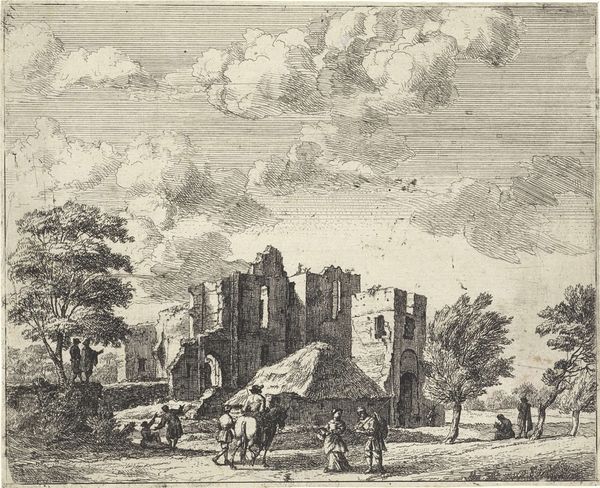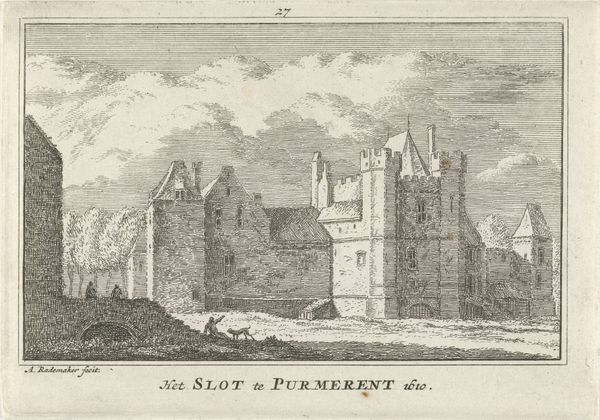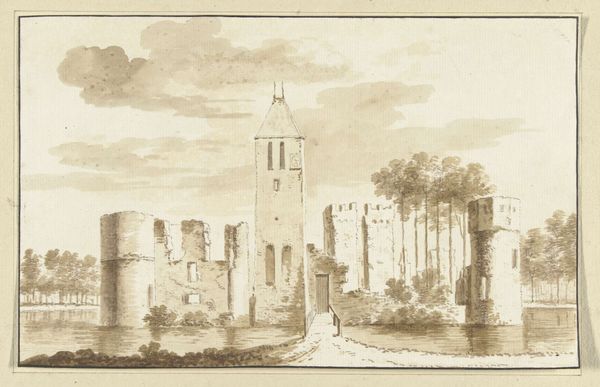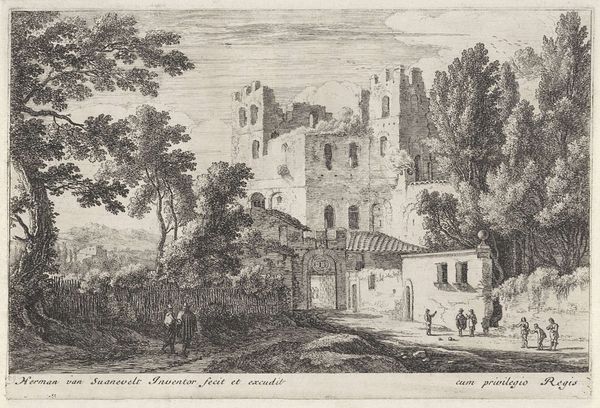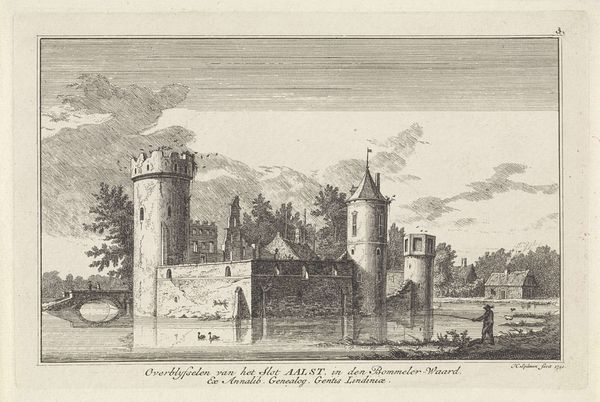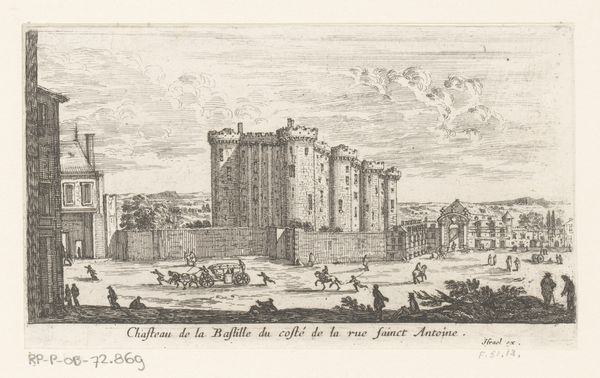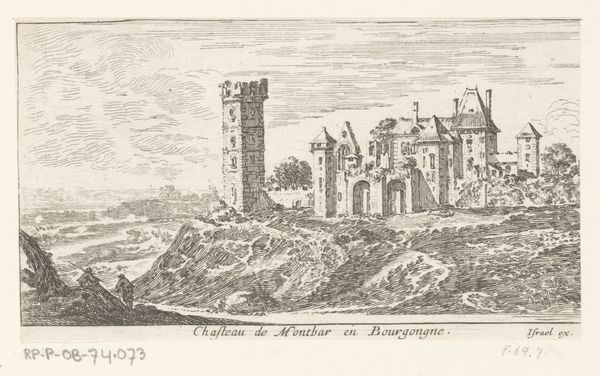
drawing, print, paper, engraving, architecture
#
drawing
#
baroque
# print
#
landscape
#
paper
#
engraving
#
architecture
Dimensions: height 80 mm, width 115 mm
Copyright: Rijks Museum: Open Domain
Abraham Rademaker made this etching of the Ruin of Egmond Castle in 1680, using a metal plate, acid, and printing press. The stark contrast between the ink and paper is a key element of the print's aesthetic. Etching, like engraving, is an indirect process. The artist coats a metal plate with a waxy, acid-resistant ground, then scratches an image into this surface with a needle. When the plate is submerged in acid, the exposed lines are eaten away, creating grooves. These grooves hold ink, which is then transferred to paper under pressure. Rademaker would have needed specialized skills, from metalworking to knowledge of acid solutions. This print exists because of the division of labor that came with industrialization. A specialist made the paper, another the ink, and yet another ran the press. The skilled labor needed to produce the etching plate contrasts starkly with these other repetitive tasks. Considering the collaborative labor and technical skill involved in its production allows us to appreciate this print beyond its simple depiction of a ruin.
Comments
No comments
Be the first to comment and join the conversation on the ultimate creative platform.
